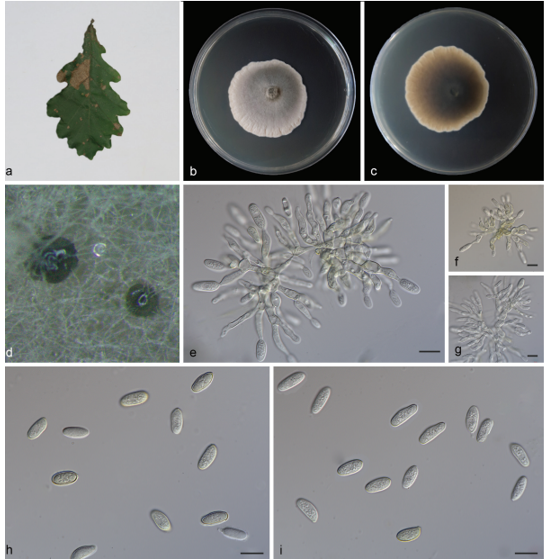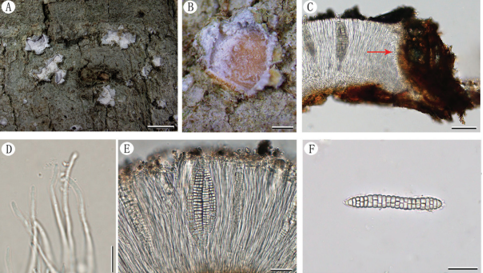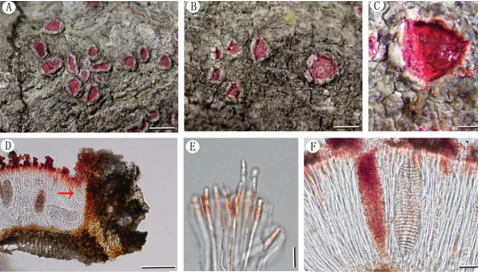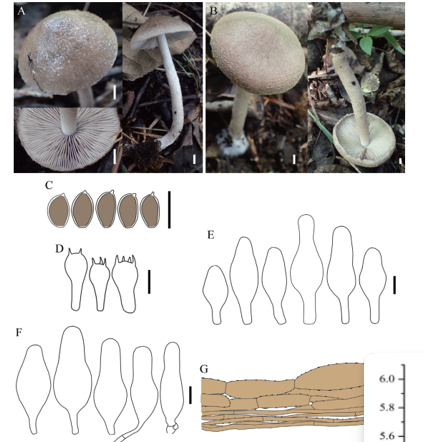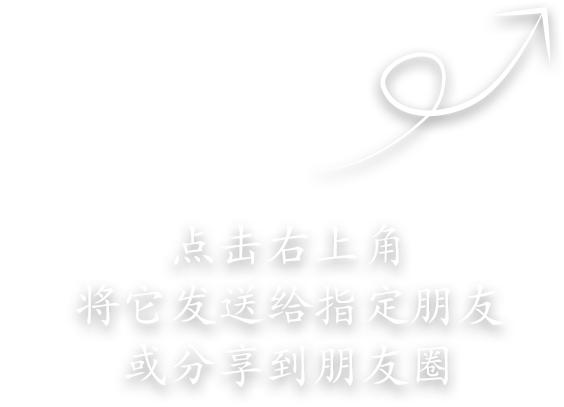Bradymyces yunnanensis L. Su, W. Sun and M.C. Xiang, sp. nov. 2020
MycoBank MB 810889
Holotype: China: Yunnan Province: Lijiang City, Yulong Naxi Autonomous County, Jade Dragon Snow Mountain, 27◦160 N, 100◦110 E, 3250 m a.s.l., from sandstone, 15 January 2013, Lei Su, (HMAS 245371 (dried culture)—holotype and CGMCC 3.17314—ex-type culture).
Morphological description
Hyphae smooth, septate with constrictions at the septa, cylindrical yellowish brown to medium brown, 2.5–5.8-µm (x = 3.3 µm, n = 20)-wide (Figure 9C–G). Swollen cells globose to sub-globose, 6.9–16.5-µm-diam. (x = 12.1 µm, n = 10) (Figure 9H,I). Multicellular bodies globose, ellipsoidal, or irregularly shaped, medium brown to dark brown, 9.9–16.3 × 14.5–22.6 µm(x = 12.9 × 16.5 µm, n = 10), formed terminally or intercalarily in old cultures (Figure 9J–R). Minimum 4 ◦C, optimum at 20–25 ◦C, and maximum 30 ◦C.
Habitat: from sandstone
Distribution: China
GenBank Accession:
Notes: B. yunnanensis can be distinguished from the phylogenetically closed species B. alpinus (95% identity in ITS and 99% in nucLSU) by that B. alpinus is unable to grow above 25 ◦C and is usually endoconidia present in one swollen cell. Multicellular bodies of B. yunnanensis were more ellipsoidal (9.9–16.3 × 14.5–22.6 µm), while that of B. alpinus were more global (10–15-µm-diam.) [24].
Reference: Wei Sun , Lei Su , Shun Yang et al.
Bradymyces yunnanensis (CGMCC 3.17314). (A,B) Colony forward and reverse after 20 weeks on MEA. (C–G) Catenated, moniliform hyphae. (H,I) Swollen cells in the intercalary of hyphae. (J–R) Multicellular bodies formed from hyphae. Scale bars: (C–R) = 10 µm.


